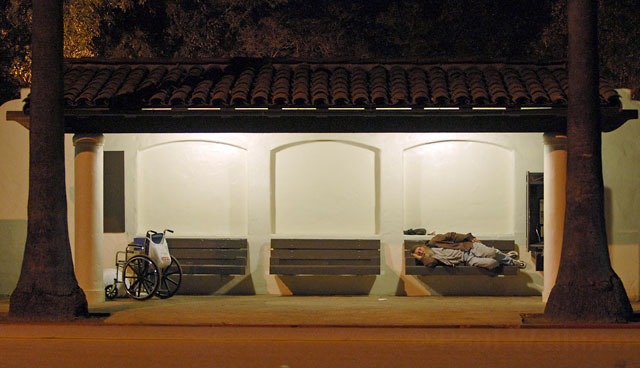The Challenge for Advocates
Serving with Respect

Right now in Santa Barbara County there is a movement to change the way that those interested in getting people off the streets work together. There are calls to:
* stream-line the coordination of homeless services; _
* cut the amount of time that elected officials spend re-hearing information that they have heard at previous meetings;
* capitalize on the influx of hundreds of volunteers from Common Ground Santa Barbara;
*and empower those on the streets.
We are now at a point where the leaders of this movement are sharing their proposed plans and are seeking input from the community. I have been to two large meetings in which Rob Fredericks, the deputy executive director of the Santa Barbara Housing Authority, has performed superbly with well-thought-out flowcharts and PowerPoint presentations. It is clear that he has done his homework and is considering what he conceives as the best interests of our community.
Specifically, the plan is often talked about as a “merger” among Common Ground Santa Barbara (CGSB), Bring Our Community Home (BOCH) and the County’s various Homeless Advisory Groups. Common Ground Santa Barbara is the group that got 550 volunteers last March to canvas the streets of Santa Barbara to do the Vulnerability Index, a survey of the health and welfare of those on the streets. It has been led, in part, by Jeff Shaffer, a former clergy and neighborhood activist who has gained enormous street-cred by doing the hard work of helping people “in the trenches” through his Wednesday evening meals at Pershing Park, events that draw dozens of people each week.
Bring Our Community Home is the County-wide organization that guides the Ten-Year Plan to End Chronic Homelessness and is largely composed of service providers from throughout the county. It is ably administered by Mike Foley and Sylvia Barnard, the executive directors of the county’s two major homeless shelters.
While the proposed structure is supposed to be a merger, it is hard to see the grassroots Common Ground organization in the new structure. While community advocacy and faith-based groups will have a central role in the new structure, how they will work together is still being talked about (as it should be).
My concern is that we sometimes take a paternalistic approach to our neighbors on the streets. Rather than empowering an historically silenced, marginalized, and disenfranchised population, we sometimes speak for “them.” Social justice mandates that those who suffer injustices be empowered to change the structures that serve or dis-serve them.
I think that our great challenge as social justice advocates is to come alongside the people we hope to serve in a spirit of respect and dignity. When we accompany those in need and those who suffer, and seek to empower them to change their own circumstances, we are doing true social justice work.
May we learn to listen to the songs of joy and the songs of sorrow from our neighbors on the streets, and refrain from speaking “for them.” May we find ways to radically incorporate the voices of those who have been silenced by structural violence and oppressive circumstances. And while not all organizations and community groups need to be bottom-up or consumer-driven, we need to be careful about speaking for groups of people who are not at the table.



